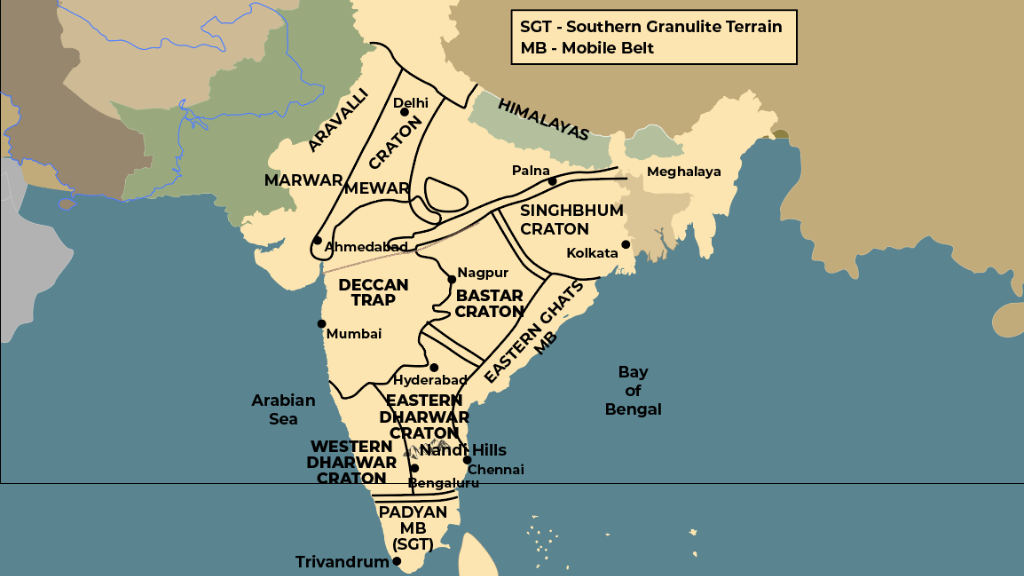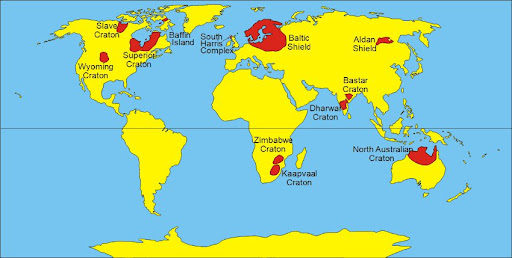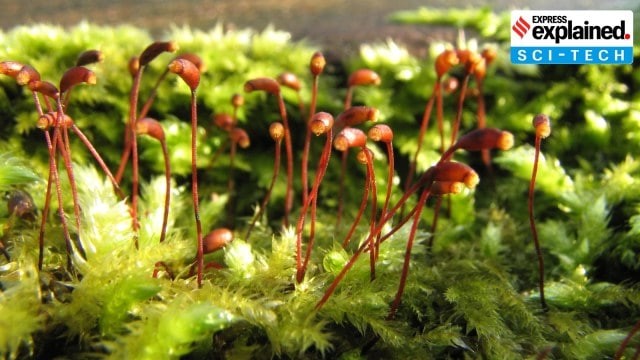





Copyright infringement not intended
Picture Courtesy: https://indroyc.com/
Context: A recent study reveals that explosive volcanic eruptions were frequent around 3.5 billion years ago in regions that are now India, South Africa, and Australia. These eruptions primarily occurred underwater, although some were above sea level.
Key Highlights of the Study
|
Key Points |
Details |
|
Age of Earth and Early Evolution |
●Earth is approximately 4.5 billion years old, characterized by vast oceans, frequent volcanic eruptions, and the absence of free oxygen and an ozone layer. Understanding early geological processes is crucial for unravelling Earth's history. |
|
Crucial Role of Cratons |
●Cratons, ancient continental pieces formed billions of years ago, hold vital information about Earth's past. The Singhbhum Craton in eastern India, dating back to 3.5 billion years, is a significant site for studying early geological processes. |
|
Research Focus on Singhbhum Craton |
●Recent study comparing Singhbhum Craton with similar cratons in South Africa and Australia. These sites preserve rocks from approximately 3.5 billion years ago, offering insights into early Earth surface processes. |
|
Explosive Volcanic Eruptions |
●Key findings indicate common explosive-style volcanic eruptions around 3.5 billion years ago in India, South Africa, and Australia. These eruptions occurred both under and above oceans, providing insights into early Earth processes. |
|
Research Methods |
●The research involved sampling rocks from the Singhbhum Craton for laboratory studies. Uranium-lead radiometric-age dating was employed to establish key geological timelines and determine when rocks formed. |
|
Similarities Across Cratons |
●Geological features of Singhbhum Craton share similarities with cratons in South Africa and Australia, indicating widespread submarine mafic volcanic eruptions between 3.5 and 3.3 billion years ago. |
|
Significance for Habitability and Life |
●Studying early geological conditions is crucial for hypothesizing early habitable conditions and understanding the emergence of life on Earth. The research contributes to constructing a comprehensive model of geological processes. |
|
Importance of Discoveries |
●Findings contribute to understanding Earth's early tectonic activities during the Archaean times, offering insights into the planet's formative years. Singhbhum Craton's unique features provide valuable information on Earth's surface processes. |
Cratons
Structure of a Craton
Formation of Cratons
Importance of Cratons
Examples of Cratons

|
PRACTICE QUESTION Q. Which of the following statements about cratons is incorrect? A) They are the oldest and most stable portions of continents. B) They are composed primarily of granites and gneisses. C) They actively participate in plate tectonics and experience significant deformation. D) They are often rich in mineral resources due to their long history of geological processes. Answer: C Explanation: Cratons are known for their stability and lack of significant tectonic activity. Unlike more active tectonic regions, cratons are characterized by their tectonic stability and have experienced minimal deformation and mountain-building processes over long periods. The composition of cratons, primarily granites and gneisses, reflects their stable and ancient nature. While they may undergo localized geological activity, such as earthquakes and intrusions of igneous rocks, they do not actively participate in plate tectonics to the same extent as other regions of the Earth's crust. This distinguishes them as the relatively inert and stable cores of continents. |







© 2025 iasgyan. All right reserved